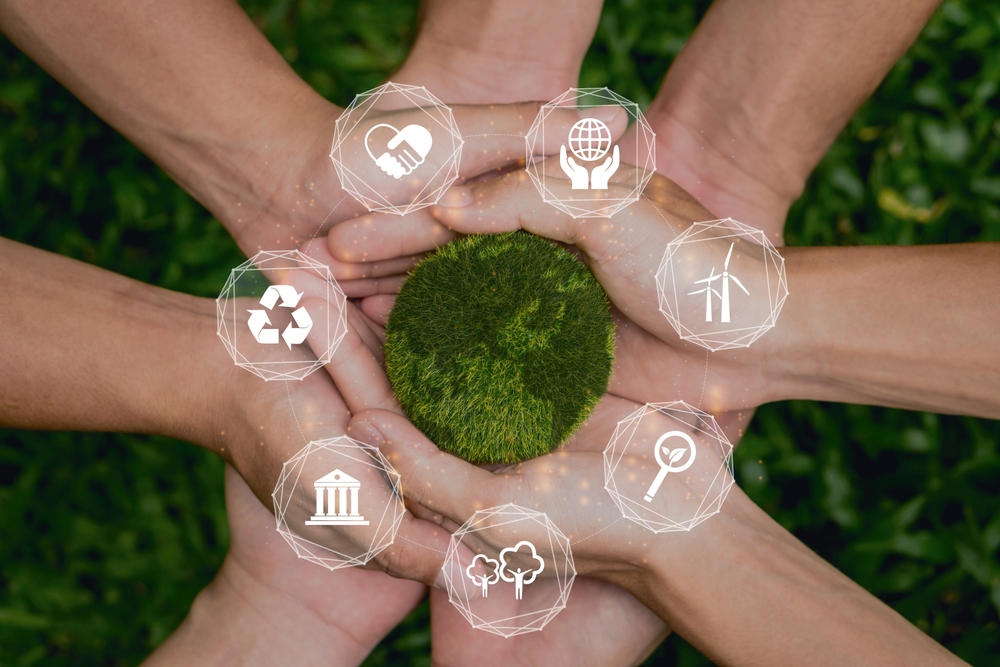The connection between sustainability and resilence is increasingly recognized, highlighting how sustainability can help cushion various disruptive situations.
Environmental, social, and governance (ESG) considerations are gaining importance on corporate agendas. In a global survey by McKinsey, 93% of respondents said their companies had at least one of the three ESG topics on their agenda. More than two-thirds reported that their companies had achieved broad impact from their ESG efforts in the last three years, and 43% said they had captured financial value from their ESG investments. Additionally, a third of respondents highlighted that working on these topics had a strong positive effect on their commitment to the organization and overall employee retention.
Evolving Debate
Far from stagnating, the sustainability debate is evolving. Today, a sustainable business sustainable business “seeks to create long-term value for stakeholders by considering social, economic, and/or environmental impacts in strategic and operational decisions.” It’s also recognized that incorporating sustainable strategies into the business model unlocks opportunities for operational efficiency and resource optimization. Therefore, sustainability is no longer an option for companies; it is key and necessary for future success.
In the past, sustainability goals were considered “nice to have.” Today, they are “essential.” Why? Because companies recognize that incorporating sustainability into operations also creates commercial value.
There is, of course, a clear goal of helping to achieve sustainable development goals and responding to regulations in the field. But it is also about optimizing the business by adopting best practices that add value.
In this business context, progress is not only being made with increasingly specific definitions of what an organization must do to be considered sustainable, but also the importance of anticipating and adapting to future challenges is being recognized. That’s why it’s essential to review the trends surrounding corporate sustainability, both in terms of approaches and technologies in use.
Supporting Figures
As Gartner indicates, sustainability programs create value. According to a 2022 study by this consultancy, 87% of leaders surveyed expected their investment in sustainability initiatives to increase in the next two years. Several interesting emerging trends emerged from this and other Gartner surveys:
- 86% of executives saw sustainability as an investment that protected their organization from disruptions.
- 80% saw it as a way to optimize and reduce costs.
- 83% said that their sustainability program activities directly created short- and long-term value for their company.
Efforts and Benefits
ESG efforts can bear fruit in several ways, including increased performance and productivity, risk reduction, better resource planning, reduced energy consumption, and more. They can also help attract consumer preference.
In this regard, it is worth noting that, as IDC analysts point out, forward-thinking organizations “understand that ESG goals are closely associated with improvements in IT efficiency.” Along with human capital, ICT (both in terms of infrastructure and software) and IT departments “are crucial for carrying out sustainability-focused projects that help organizations succeed in their respective journeys to becoming sustainable companies.”
Data Analysis
Undoubtedly, one of the strong trends currently observed in corporate sustainability is the use of artificial intelligence (AI) tools for various purposes. AI is indeed an example of technology that not only allows the adoption of sustainable practices but also predicts and anticipates future challenges.
In various companies from different sectors, there is already talk of developing sustainability strategies driven by artificial intelligence technologies. In fact, an important study found that 37% of companies are already actively using AI for sustainability. This involves, of course, monitoring and analyzing data more directly related to a company’s emissions to identify areas for improvement. It also extends to optimizing lighting, energy systems, HVAC systems, and other equipment, with a focus on reducing consumption and emissions. Here, the relationship between artificial intelligence and environmental care is evident.
Regarding corporate sustainability, artificial intelligence offers a key advantage: the ability to gain deeper insights into data and to achieve insights that inform decisions. Initially, to obtain sustainability indicators, and then, obviously, to obtain other metrics that allow for improvements. Additionally, by combining AI with other technologies such as IoT, for example, the possibilities of acting in favor of sustainability are further expanded.
AI tools increasingly leverage machine learning (ML) and generative AI frameworks to automate data flows and detect patterns and trends. In their current state of evolution, these technologies can help companies be more sustainable in different ways. For example, they can provide consistent ESG reports and add efficiency to recycling processes (automating sorting, predicting maintenance needs, and more). They can also analyze sustainability data and monitor different variables, control energy and resource consumption, and help develop new sustainable products.
It is important to bear in mind, however, that in the case of AI, incorrect training data can lead to “hallucinations,” biases, and inaccurate results; therefore, someone should always be close by to analyze the results and make sense of the facts and relevant information.
Sustainability Indicators
In companies, AI also helps extend the life of assets by predicting their condition and anticipating failure risks (predictive maintenance analysis). It also facilitates better inventory management (by helping to forecast demand and optimize delivery routes, for example), and it helps detect anomalies in production lines, avoiding waste and energy loss.
On the other hand, in data centers, AI allows for understanding computing demand over time, in such a way that it can optimize the use of computing and cooling resources. This can lead to very significant energy savings.
For example, telecommunications companies already use AI-based data analysis for predictive maintenance, to increase network efficiency and reduce downtime and energy consumption.
To identify areas to focus on for quick wins in terms of corporate sustainability, companies can seek the support of an experienced technology partner like Baufest. With our guidance, they can design an AI-driven sustainability strategy tailored to their strategic priorities and current conditions.

